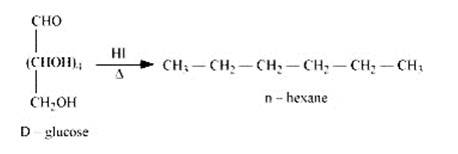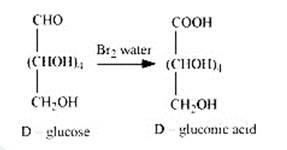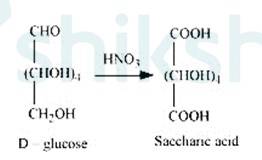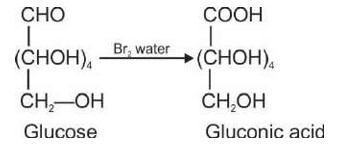14.17 What happens when D-glucose is treated with the following reagents? (i) HI (ii) Bromine water (iii) HNO3
14.17 What happens when D-glucose is treated with the following reagents? (i) HI (ii) Bromine water (iii) HNO3
-
1 Answer
-
14.17
When D-glucose is heated and treated with HI for a long period of time, then n-hexane is formed, which shows that all the six-carbon atoms are linked in a straight

2. When D-glucose is treated with Br2 water i.e., bromine water which is a mild oxidising agent, then we get D-gluconic acid as one of the product. This reaction assures the presence of carbonyl group which is available as an aldehydic group.

3. On being treated with HNO3, D-glucose get oxidised which gives saccharic acid as final Saccharic acid is a di-carboxylic acid. This reaction confirms the presence of alcoholic group (- OH) in the glucose.

Similar Questions for you
Insulin is a globular proteins.
Ionisation enthalpy increases in a period. Z dominates over screening effect (s) in a period as Zeff. increases.
Kindly go through the solution
Histidine is an essential amino acid
Lactose is a disaccharide which is formed by forming C? -C? glycosidic linkage between D-galactose and D- glucose.
Lactose - (Hydrolysis)-> D - galactose + D - glucose
Taking an Exam? Selecting a College?
Get authentic answers from experts, students and alumni that you won't find anywhere else
Sign Up on ShikshaOn Shiksha, get access to
- 65k Colleges
- 1.2k Exams
- 679k Reviews
- 1800k Answers

